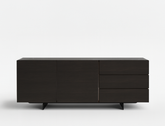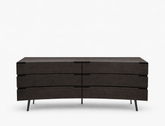Furniture Lifespan: Time for a Change?

Deciding when to replace your furniture isn't always clear-cut. Unlike perishable goods, furniture doesn't come with an expiration date. Yet, it inevitably undergoes wear and tear over time. Interestingly, certain types of furniture, such as those crafted from wood and leather, can appreciate in value, making them not just functional pieces for your home but also worthwhile investments. However, it's crucial to recognize that not all furniture pieces are destined to last forever. Signs of wear, including cracks, stains, creaking sounds, and a general feeling of discomfort, signal that it's time for an update. This guide delves into understanding the lifespan of various furniture pieces and identifying the right time for their replacement to ensure your home remains both stylish and comfortable.
How Long Should Furniture Last?
The durability of furniture varies significantly based on the materials used, the care it receives, and the frequency of its use. For example, teak is celebrated for its exceptional durability, making it a top choice for outdoor furniture that can withstand harsh weather conditions. Similarly, with appropriate care, leather furniture can outlast fabric options. It's important to consider not just the appearance but also the structural integrity and comfort level when evaluating furniture quality.
When to Consider Furniture Replacement:
Bedroom Essentials: From bed frames and wardrobes to mattresses, bedroom furniture plays a pivotal role in ensuring a good night's sleep. A bed frame that starts creaking or sagging indicates it's time for a new one. Similarly, if your mattress no longer offers the support and comfort it once did, upgrading to a newer model with the right firmness and hypoallergenic properties is advisable.
Living Room Upgrades: The living room is the heart of many homes, and furniture like sofas and coffee tables see a lot of use. Signs that your sofa needs replacing include color fading, sagging, and a lack of support. Coffee tables and TV consoles that show signs of wear or instability also need to be considered for replacement.
Dining and Kitchen Furnishings: Dining tables, chairs, and kitchen cabinets are subject to spills, heat, and general wear. Updating these pieces often comes down to maintenance, aesthetic preferences or lifestyle changes, but signs of damage or instability should not be ignored.
Office and Outdoor Settings: The comfort and support provided by office furniture are crucial, especially considering the hours spent using them. Outdoor furniture, on the other hand, faces the additional challenge of weathering the elements. Regularly inspect these pieces for signs of wear or damage.
Disposition of Outdated Furniture:
When it's time to part with old furniture, consider donation or resale options for items in good condition. For pieces that are beyond repair, look into disposal services. Some online retailers even offer to take away your old furniture when delivering new items, providing a convenient solution.
Frequently Asked Questions About Furniture Replacement:
How do I know if my furniture is antique or simply old?
Antique furniture typically refers to pieces over 100 years old, often with historical or craftsmanship value. If unsure, consulting with an antique dealer can provide clarity.Can I repair my furniture instead of replacing it?
Many pieces can be repaired or refurbished, depending on the extent of the damage. Assess whether the cost of repair is worthwhile compared to purchasing new furniture.How often should I inspect my furniture for wear and tear?
Conduct a thorough inspection at least once a year or if you notice any immediate signs of damage or discomfort.Are there eco-friendly options for disposing of old furniture?
Yes, donating to local charities, selling, or recycling are environmentally friendly ways to dispose of unwanted furniture.How can I extend the lifespan of my furniture?
Regular maintenance, including cleaning, tightening loose screws, and avoiding excessive moisture and sunlight exposure, can significantly prolong your furniture's life.
Understanding the right time to replace your furniture ensures not only the aesthetic appeal of your home but also the comfort and safety of its inhabitants. Whether it's the cozy sofa in your living room or the sturdy dining table, keeping an eye on their condition and knowing when to make an upgrade can make a world of difference in maintaining a welcoming and functional living space.







